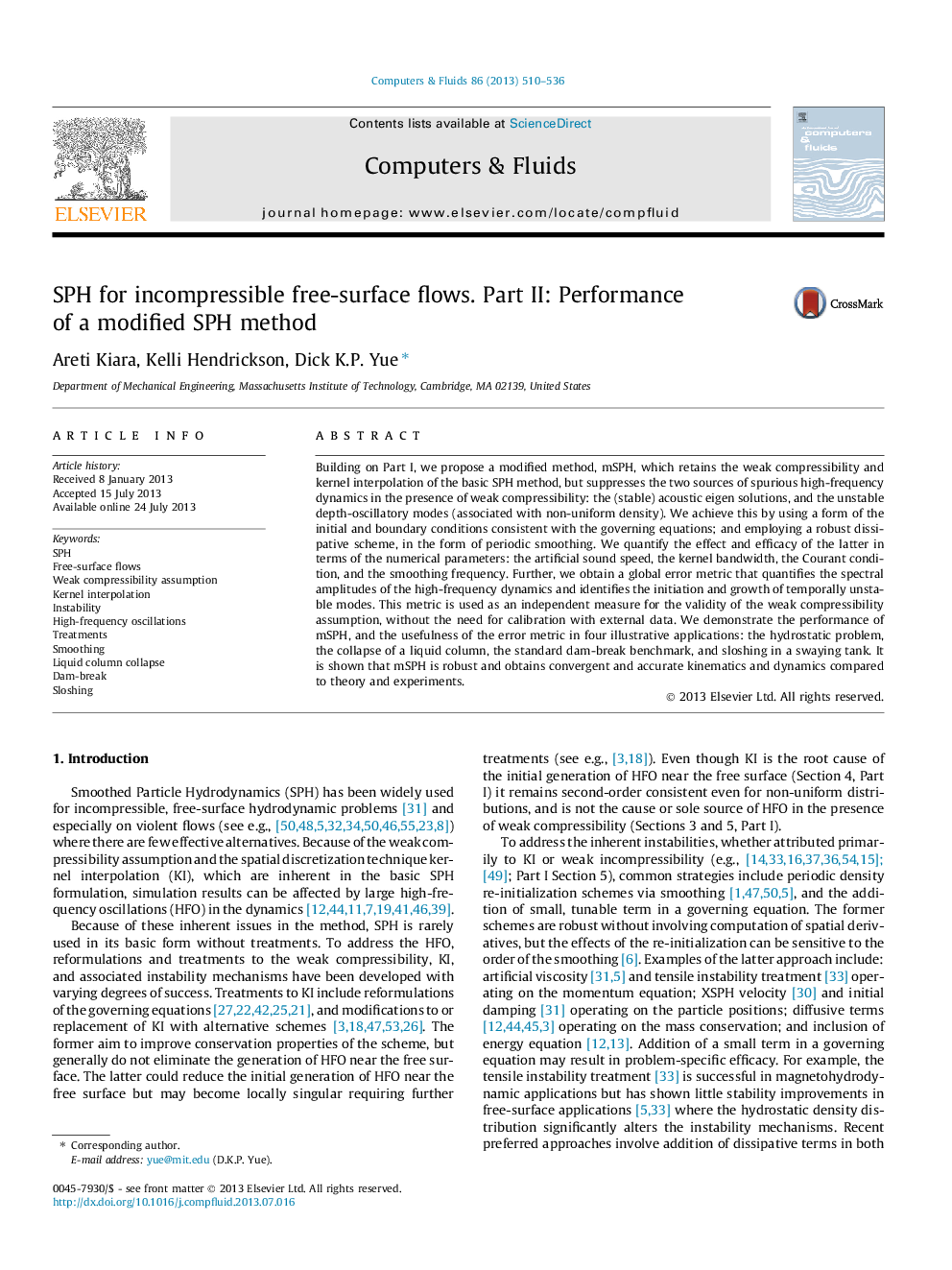| Article ID | Journal | Published Year | Pages | File Type |
|---|---|---|---|---|
| 7157506 | Computers & Fluids | 2013 | 27 Pages |
Abstract
Building on Part I, we propose a modified method, mSPH, which retains the weak compressibility and kernel interpolation of the basic SPH method, but suppresses the two sources of spurious high-frequency dynamics in the presence of weak compressibility: the (stable) acoustic eigen solutions, and the unstable depth-oscillatory modes (associated with non-uniform density). We achieve this by using a form of the initial and boundary conditions consistent with the governing equations; and employing a robust dissipative scheme, in the form of periodic smoothing. We quantify the effect and efficacy of the latter in terms of the numerical parameters: the artificial sound speed, the kernel bandwidth, the Courant condition, and the smoothing frequency. Further, we obtain a global error metric that quantifies the spectral amplitudes of the high-frequency dynamics and identifies the initiation and growth of temporally unstable modes. This metric is used as an independent measure for the validity of the weak compressibility assumption, without the need for calibration with external data. We demonstrate the performance of mSPH, and the usefulness of the error metric in four illustrative applications: the hydrostatic problem, the collapse of a liquid column, the standard dam-break benchmark, and sloshing in a swaying tank. It is shown that mSPH is robust and obtains convergent and accurate kinematics and dynamics compared to theory and experiments.
Keywords
Related Topics
Physical Sciences and Engineering
Engineering
Computational Mechanics
Authors
Areti Kiara, Kelli Hendrickson, Dick K.P. Yue,
